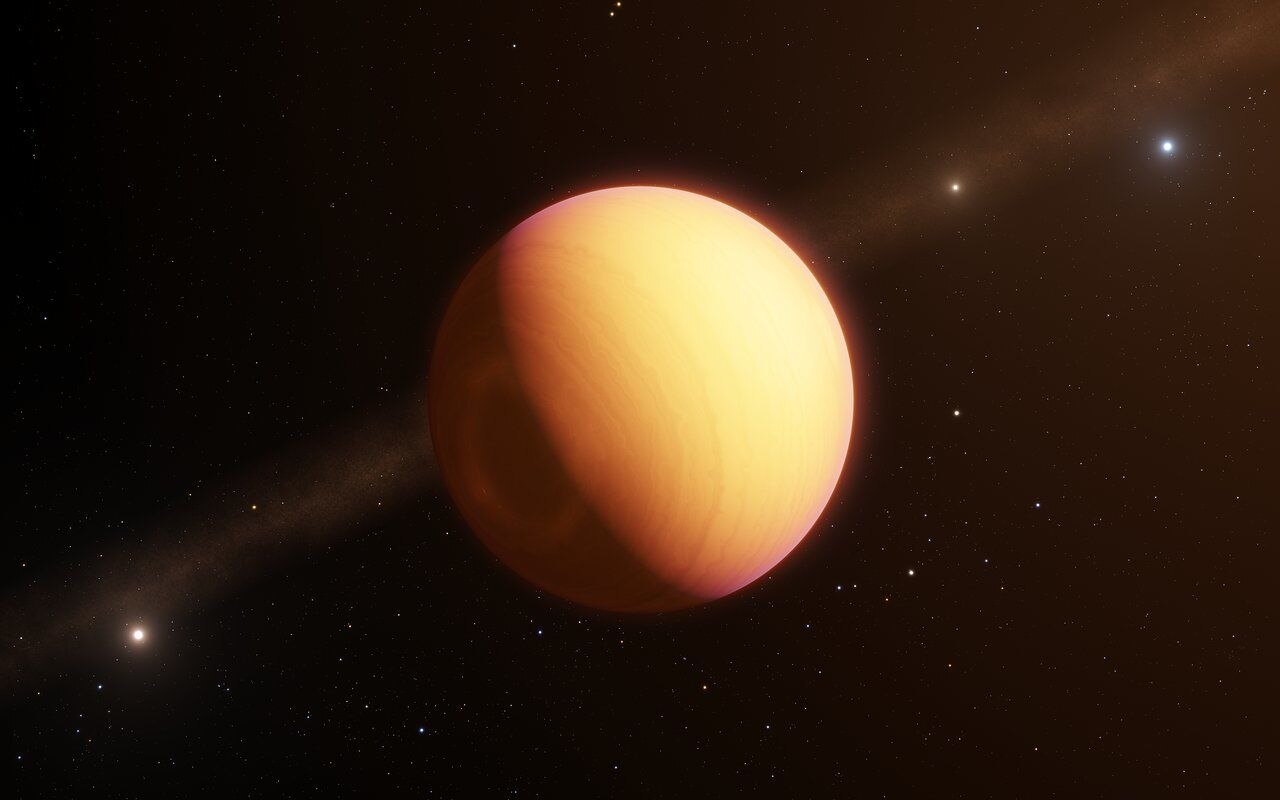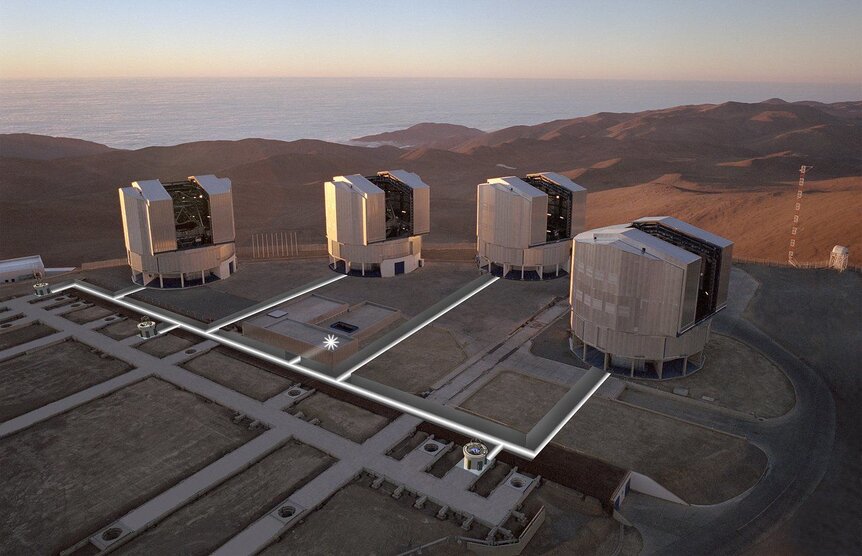Create a free profile to get unlimited access to exclusive videos, sweepstakes, and more!
A young, hot exoplanet observed for the first time using optical interferometry

Exoplanet discoveries seem to be rolling in practically every day now; we’re getting really good at discovering alien worlds orbiting alien stars. The count right now stands at about 4,000 such planets discovered, which is incredible, given that the first one was only found in 1992!
Many different methods are used to discover them, but one of the most impressive is direct imaging: Literally, taking an image of the planet next to its star. That is quite a feat, since a star can easily be a billion times brighter than a planet.
However, for some planets you can game the system. For example, if the star and its planets are very young, the planets are still glowing hot, energized by the heat leftover from their formation. If you look in the infrared part of the spectrum, outside what our eyes can see, stars tend to be fainter and planets brighter, so that helps with contrast.
This technique was used to directly image not just one but a system of exoplanets orbiting the star HR 8799. This is a very young star, only about 30 million years old (the Sun is 4.6 billion years of age, for comparison) and very close, about 128 light years away. That last bit helps too, because the closer a star is to us the farther the planets will appear to be from it (just like you can easily separate two fingers if they are held right in front of your face, but not if the hand is a kilometer away).
In 2008, astronomers used the Keck and Gemini telescopes to get images of three of the planets orbiting HR 8799 in the infrared. In fact, they've been observed so many times we can actually see their orbital motion!
The three planets are called HR 8799b, c, and d. But wait! There's more! Literally: A fourth planet was found in 2010, and is called HR 8799e.
Astronomers recently announced that this fourth exoplanet was observed for the very first time using a relatively new technique: optical interferometry*.
Interferometry is an extremely complex technique that combines the observations of telescopes at different locations, essentially creating a virtual telescope the size of the distance between them. This allows observations of extremely small details, far smaller than can be done with one telescope alone. I describe the technique in an article about the recent image of a black hole if you want details.
Interferometry is easier with light at longer wavelengths, like radio waves. It's far harder at shorter wavelengths, but it’s been done for many years now. The Very Large Telescope in Chile, is actually made up of four individual monster 8.2-meter telescopes, separated by about 100 meters. Many times they are used as standalone 'scopes, but this time astronomers used them to observe HR 8799e in the infrared, separating it from its parent star despite it being a mere 0.39 arcseconds away (an arcsecond is an angle on the sky equal to 1/3600 of a degree, equivalent to the size of a quarter coin 5 kilometers away). Even more amazing, the star is 10,000 times brighter than the planet! So this was quite an achievement.
But there’s more. Not only did they see the planet, but they could also obtain a spectrum of it, breaking its light up into individual colors. That's astonishing! This is extremely hard to do with faint objects.
This is critically important because the spectrum can reveal a lot about the object emitting the light. For example, the astronomers found that the planet is indeed very hot: about 1,150 Kelvins (877° C or 1,600° F). At its distance from the star of 2.5 billion kilometers — about the same distance as Uranus from the Sun — you might expect it to be very cold, but remember this planet is still young and glowing from leftover heat from its formation.
They were also able to measure the planet's mass as 10 times Jupiter's (though with an uncertainty that means it could be as high as 17 or as low as 6 times Jupiter's mass), and calculate a size of about 1.17 times Jupiter. That means it's about 6 times denser than Jupiter, too. That’s pretty dang dense, denser than Earth. This object may be more like a brown dwarf than an exoplanet, then — these are objects midway in mass between planets and stars, and can be very dense.
But there’s more: Different atoms and molecules absorb different wavelengths (colors) of light, meaning they can be identified in a spectrum. Examining the spectrum of HR 8799e, the astronomers found signs of the presence of carbon monoxide (CO), but none from methane. That's surprising; given the temperature and pressure of the atmosphere, it would be expected that CO would react with hydrogen to form methane. Something must be preventing that from happening. The authors speculate that vertical winds separate the CO from the hydrogen, preventing them from interacting.
Imagine! Wind patterns can be inferred on a hot young planet 1,280 trillion kilometers away! The spectrum also indicates the presence of iron and silicates (rocks) as clouds in the atmosphere, kept in a vapor due to the intense heat. The vertical winds could then possibly be due to intense convection, where hot air rises and cool air sinks, which in turn implies the iron and silicates can cool and rain down into the planet’s interior — a situation that is as alien and inhospitable as you can imagine.
Such is the power of interferometry. This is the first time an exoplanet has been observed using an optical interferometer, and the spectrum they got was many times better than any ever taken for HR 8799e. This technique should be pretty useful in the future, and can be applied for any planet that’s more than about 0.1 arcseconds from its star, if the star is also less than about 25,000 times brighter than the planet. I imagine we'll be able to find some candidates to fit those constraints.
The astronomers also calculate that if they can us telescopes separated by about 10 kilometers — 100 times farther than the VLT telescopes — they could actually start to resolve features in the clouds of exoplanets! That's incredible… and not science fiction.
I wonder how long it'll be before we can get images of features on a planet orbiting another star? A few decades?
I hope less. That would be an amazing thing indeed to see.
*Technically, the telescopes used infrared light, but this is still called "optical" interferometry, to distinguish it from radio interferometry.
















